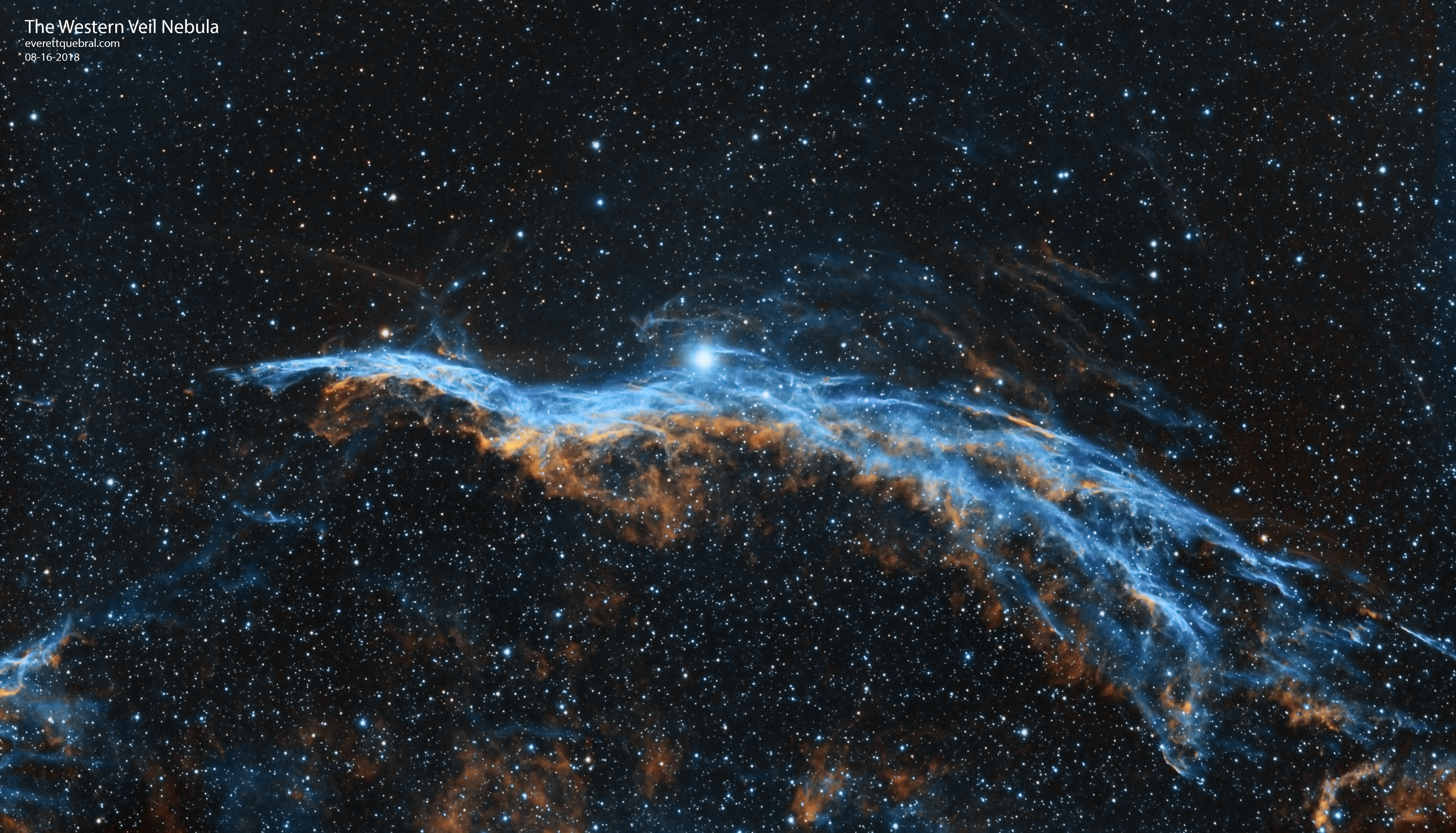Western Veil Nebula

- Published on

Summary of the Western Veil Nebula (NGC 6960): The Western Veil Nebula, also known as NGC 6960, is a captivating supernova remnant located in the constellation Cygnus. It is part of the larger Veil Nebula complex, which represents the remnants of a massive star that exploded in a supernova event thousands of years ago. The intricate filaments and shockwaves of ionized gas in NGC 6960 create a visually stunning cosmic tapestry, showcasing the dynamic aftermath of stellar explosions. Its composition primarily includes ionized hydrogen, oxygen, and sulfur, revealing the complex interplay between stellar remnants and the interstellar medium.
Discovery and Early Observations: The Western Veil Nebula was first identified and cataloged by astronomers during the 18th and 19th centuries, with its distinctive filaments noted for their resemblance to a delicate veil in the night sky. Early observers marveled at its intricate structure and the energetic processes at play within the supernova remnant.
Astronomical Contributions: Astronomers and observers throughout history have contributed to our understanding of the Western Veil Nebula and its place in the cosmic tapestry. Their observations and cataloging efforts have helped characterize the nebula's morphology, dynamics, and spectral features, enriching our knowledge of supernova remnants and their role in galactic evolution.
Photographic Era: The advent of astronomical photography in the late 19th and early 20th centuries allowed for detailed imaging of the Western Veil Nebula. Photographic plates and later digital imaging technologies captured the intricate filaments and shockwave fronts of NGC 6960, providing astronomers with valuable data for studying its structure and physical properties.
Telescopic Observations: Telescopic observations of the Western Veil Nebula across different wavelengths, including hydrogen-alpha and oxygen-III filters, revealed additional layers of information about its ionization state, chemical composition, and interaction with the surrounding interstellar medium. These observations have helped unravel the complex processes shaping supernova remnants and their influence on galactic environments.
My Observation Experience: Capturing the Western Veil Nebula firsthand was a thrilling experience that required precise equipment and a deep appreciation for astrophotography. Utilizing the 127mm triplet Explore Scientific telescope and ZWO ASI 1600 Monochrome camera with specialized narrowband filters, I embarked on capturing the intricate details and dynamic structures of NGC 6960.
Equipment Used: The astrophotography setup included the 127mm triplet Explore Scientific telescope, known for its exceptional imaging capabilities and sharp resolution. Paired with this telescope was the ZWO ASI 1600 Monochrome camera equipped with narrowband filters optimized for capturing the emissions from ionized hydrogen and oxygen in the Western Veil Nebula.
Exposure Settings and Processing: Meticulous planning of exposure settings, including exposure time, ISO sensitivity, and temperature control, ensured optimal data acquisition for capturing the Western Veil Nebula. Advanced processing techniques using PixInsight software allowed for calibration, alignment, and enhancement of multiple exposures to reveal the intricate filaments, shockwave fronts, and dynamic structures of NGC 6960 in exquisite detail.
Interpretation and Artistry: Beyond its scientific value, astrophotography of the Western Veil Nebula allows for artistic interpretation, showcasing the beauty and complexity of cosmic remnants. Skilled processing techniques and artistic vision transform raw data into a visually stunning image that conveys both scientific detail and aesthetic appeal, inviting viewers to explore the wonders of supernova remnants and the ongoing processes of galactic evolution.